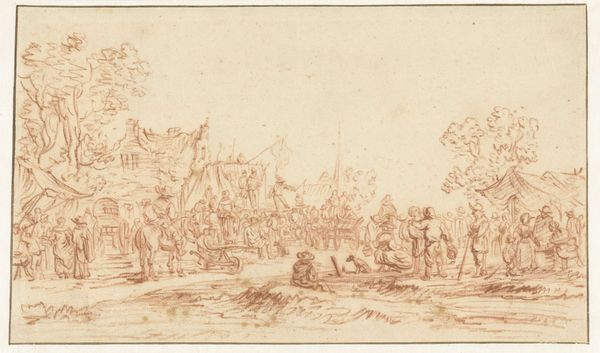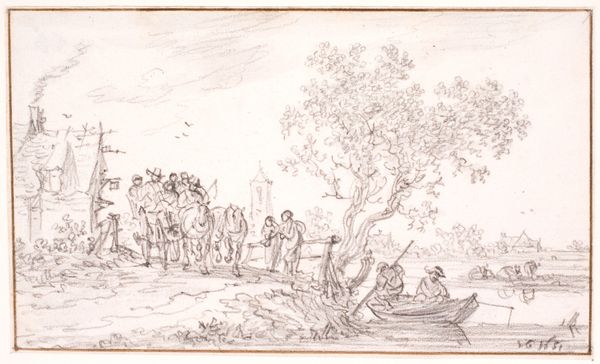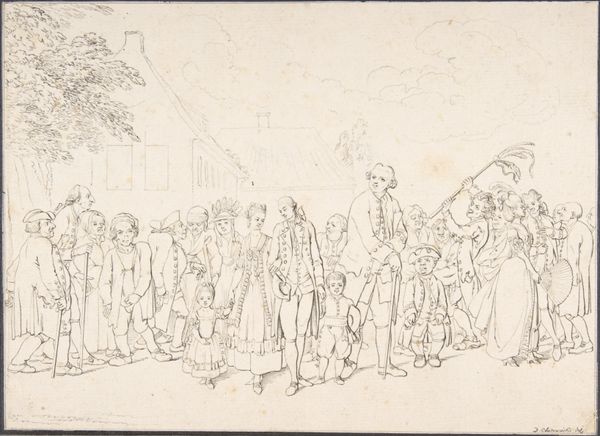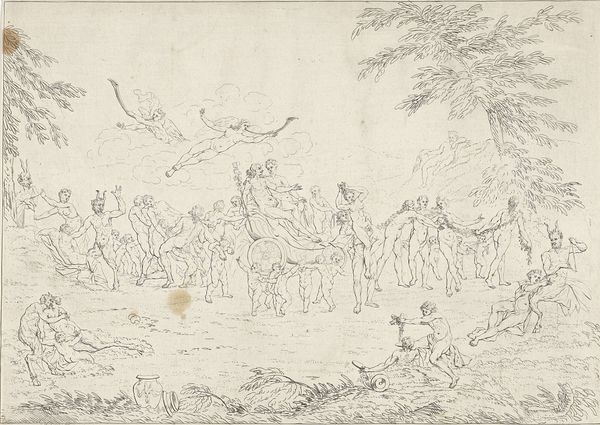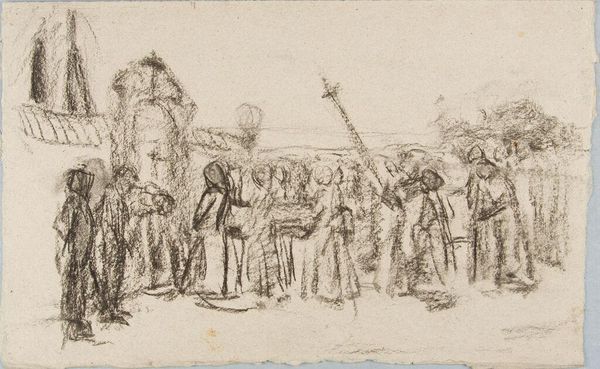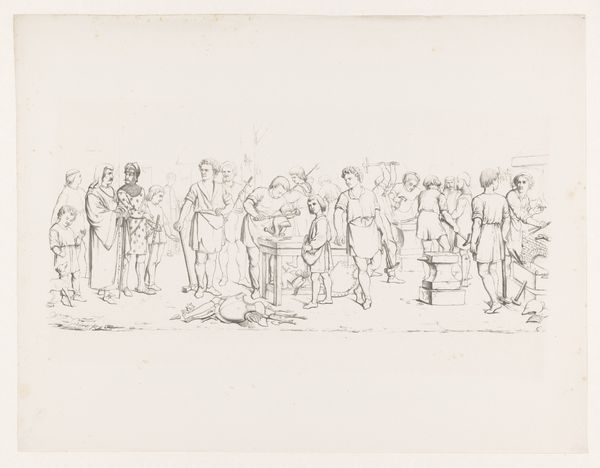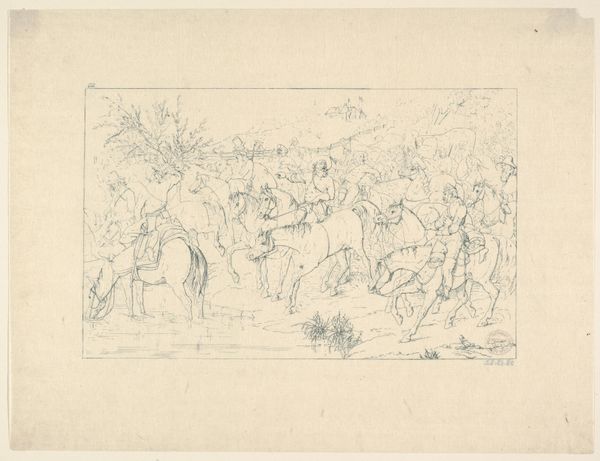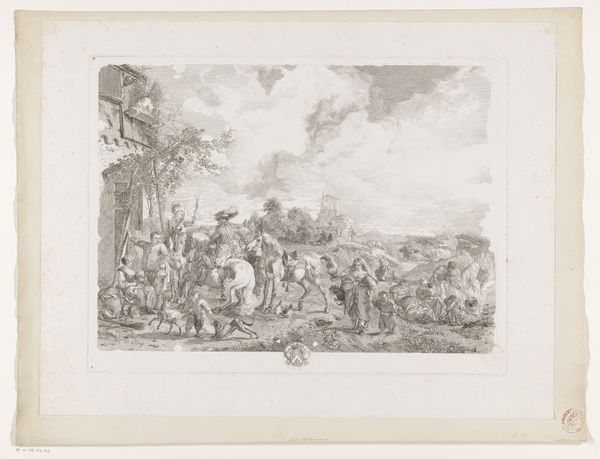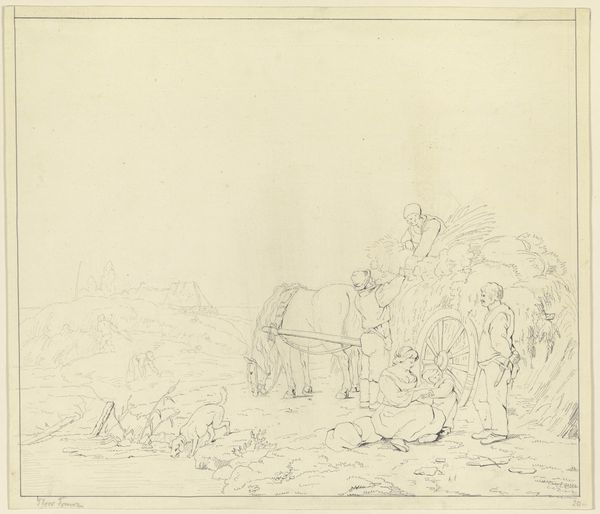
drawing, pencil
#
drawing
#
dutch-golden-age
#
pencil sketch
#
landscape
#
pencil
#
sketchbook drawing
#
genre-painting
#
realism
Dimensions: height 135 mm, width 196 mm
Copyright: Rijks Museum: Open Domain
Editor: This is "Village Street with a Quack and Other Figures" by Jan van Goyen, dating from 1631. It's a pencil drawing. I find it really interesting how much detail he packs into such a light sketch. What catches your eye about it? Curator: The distribution of mass and void is of significant interest. Van Goyen masterfully utilizes the blank space of the paper to suggest depth and atmosphere. Observe how the density of the pencil lines increases toward the lower portion of the composition, anchoring the scene. Do you notice how the buildings are barely described? Editor: Yes, it's almost like he's more interested in the figures themselves, the "volume" they create on the page versus the architecture. I wonder why he chose such a fleeting medium like pencil for such a detailed street scene? Curator: Indeed. Pencil, typically regarded as a preparatory medium, takes center stage here. It’s fascinating how Van Goyen leverages the inherent qualities of the material—its capacity for subtle gradations and delicate lines—to construct a seemingly spontaneous, yet meticulously rendered, composition. How does the uniformity of the line weight affect your reading? Editor: It gives it a sense of immediacy, as if capturing a fleeting moment. Maybe he wasn’t aiming for photorealistic accuracy but instead trying to convey the feeling of a bustling marketplace. I suppose the rough quality almost emphasizes the rough-and-tumble world he depicts! Curator: Precisely. Furthermore, the seemingly casual arrangement of figures contributes to a sense of dynamic movement within the picture plane. The eye is drawn in multiple directions, preventing any single focal point from dominating. Editor: I see what you mean. Initially I saw the figure on the elevated platform. But I missed the smaller groupings to the left. I’ll never look at a simple pencil drawing the same way again! Curator: It's the inherent paradox of seeming simplicity versus complex artistry, isn't it? A formal reading truly reveals the artist’s choices in guiding our vision.
Comments
No comments
Be the first to comment and join the conversation on the ultimate creative platform.


